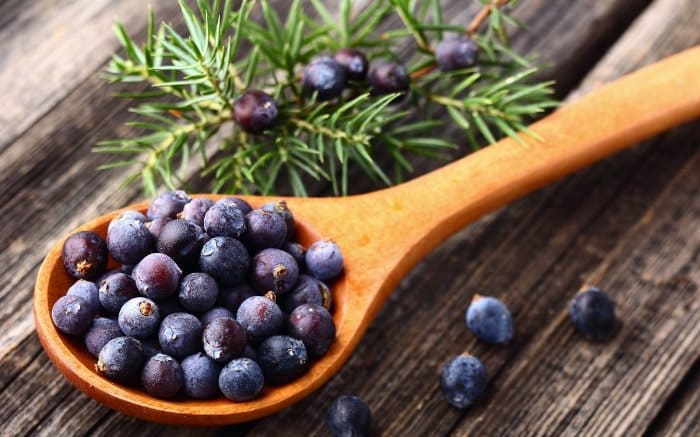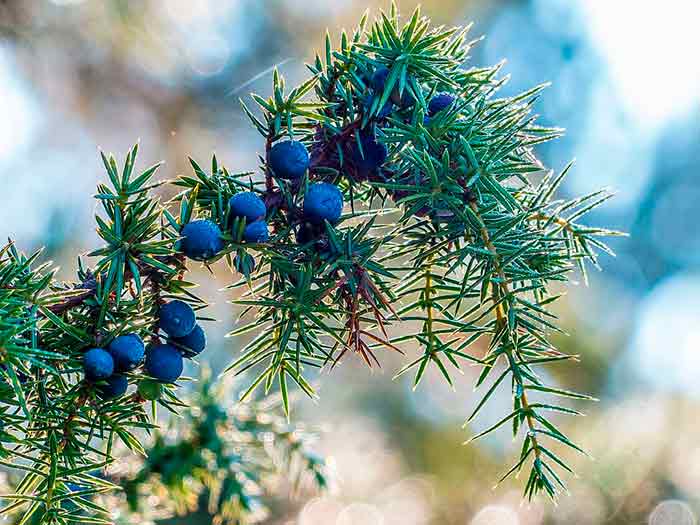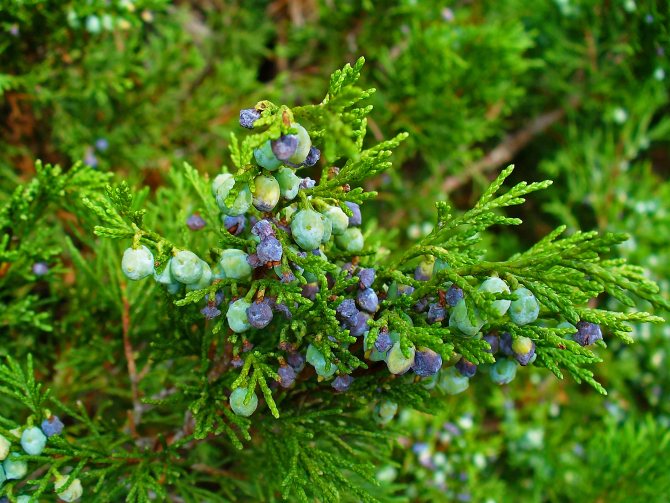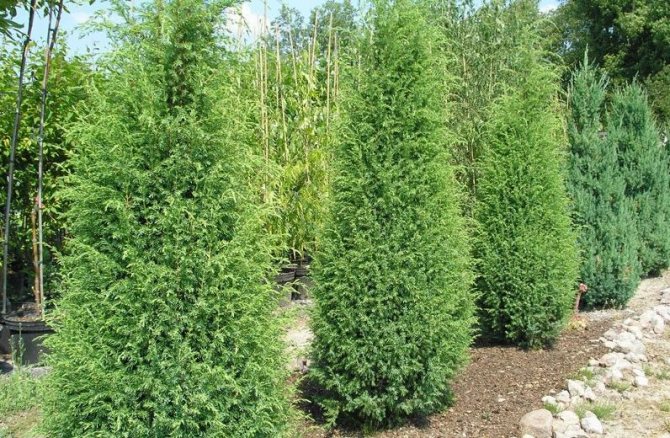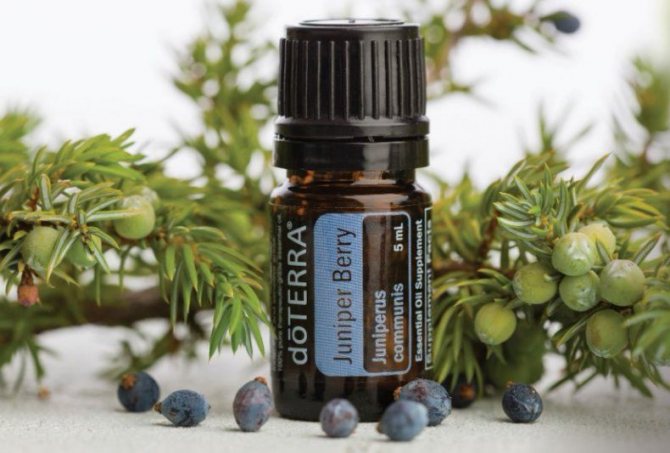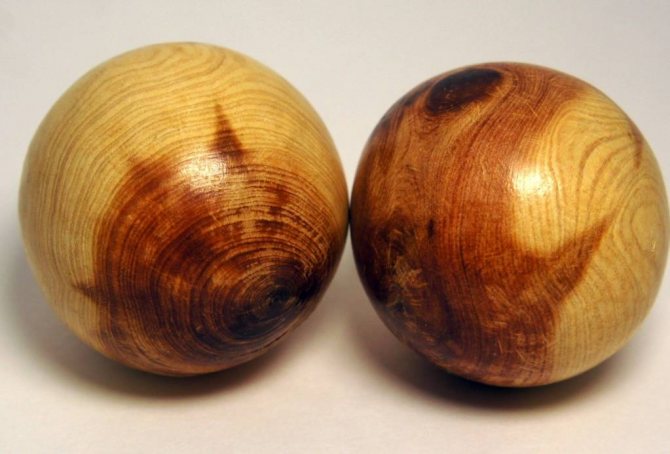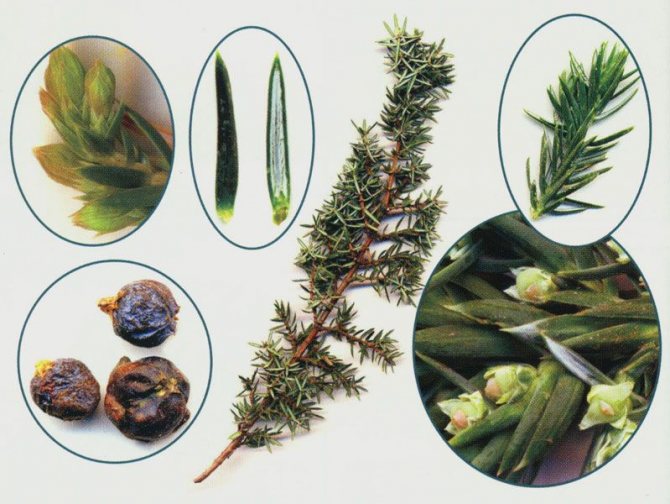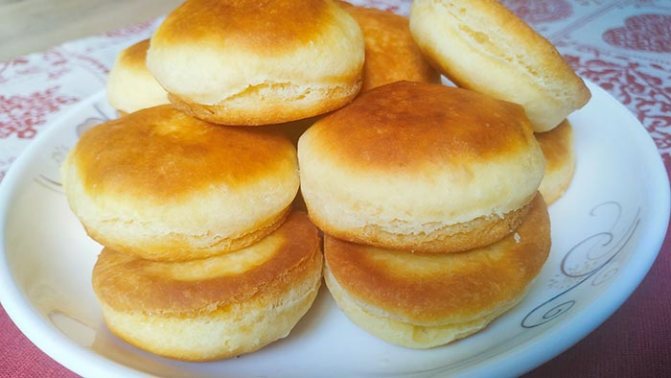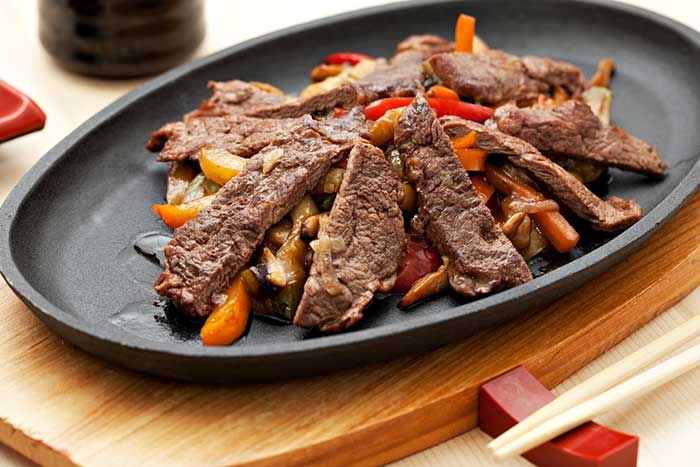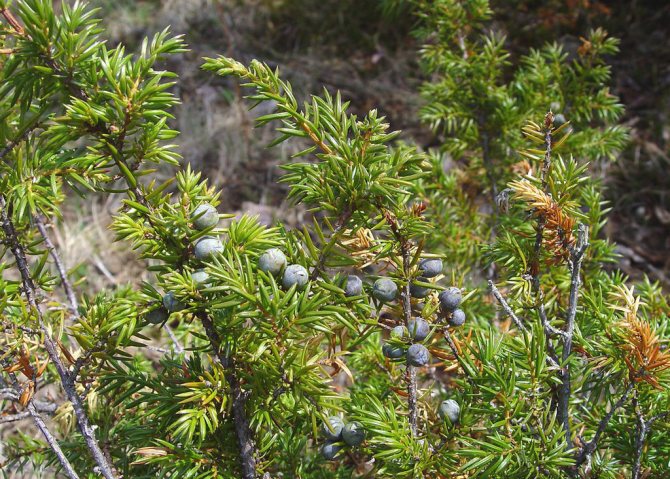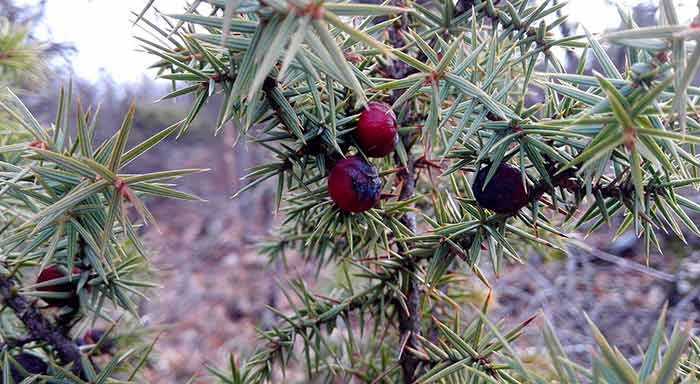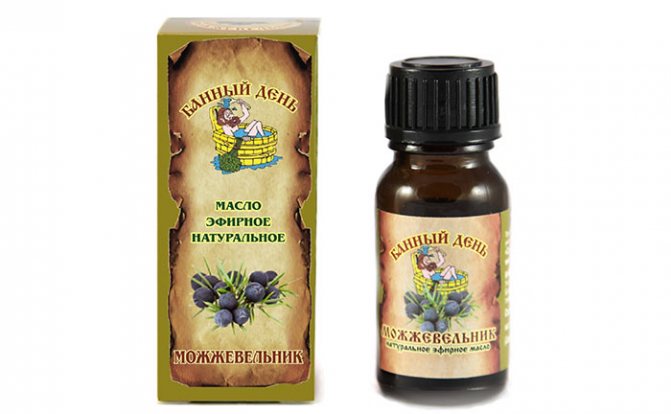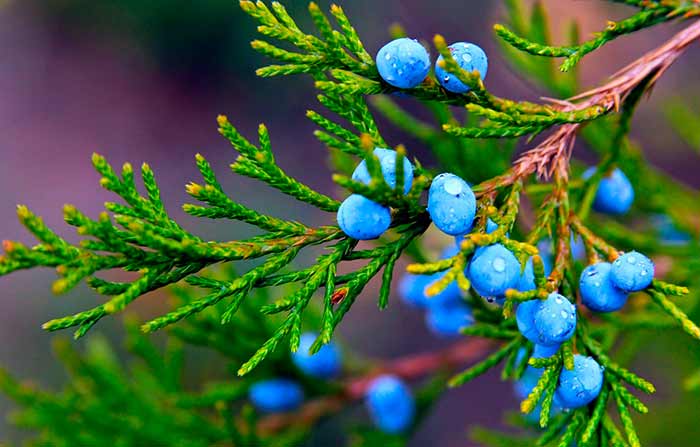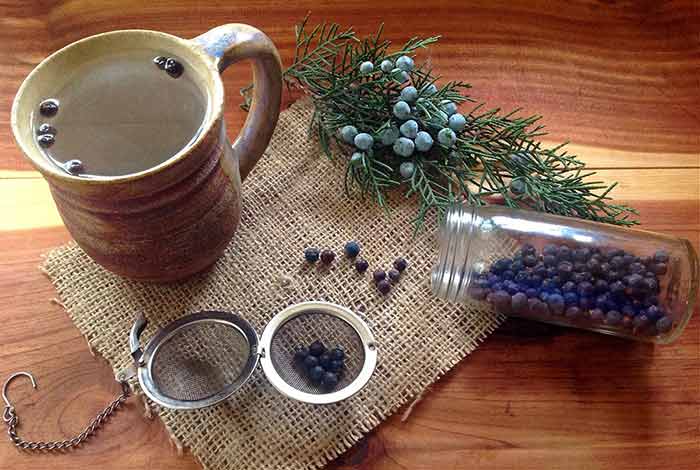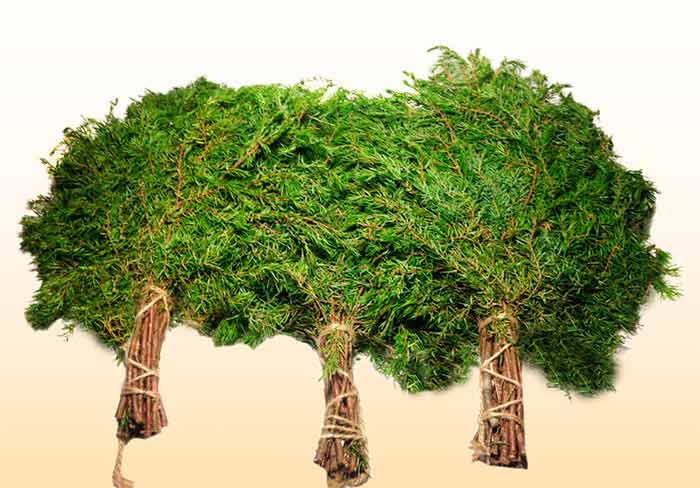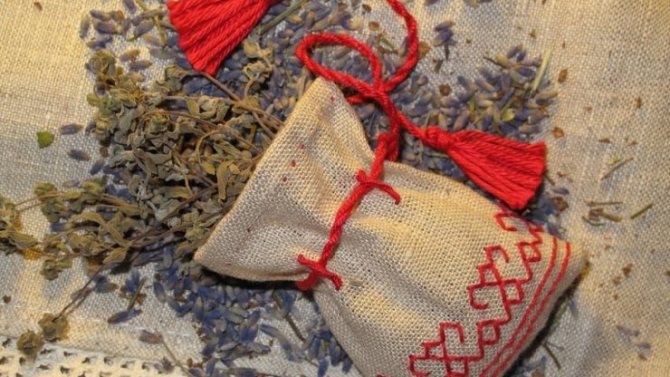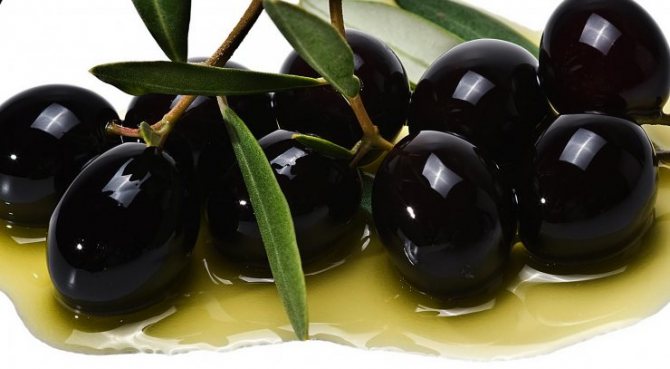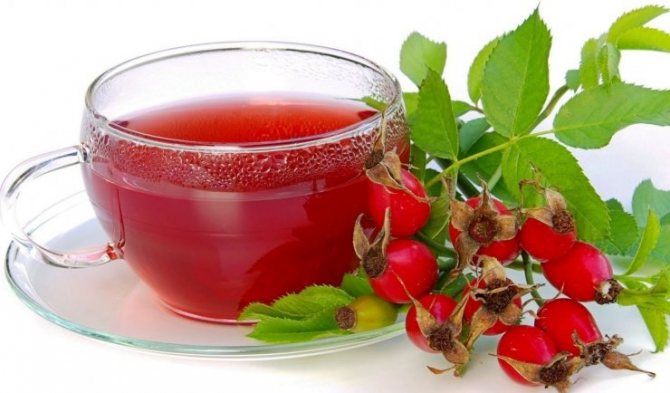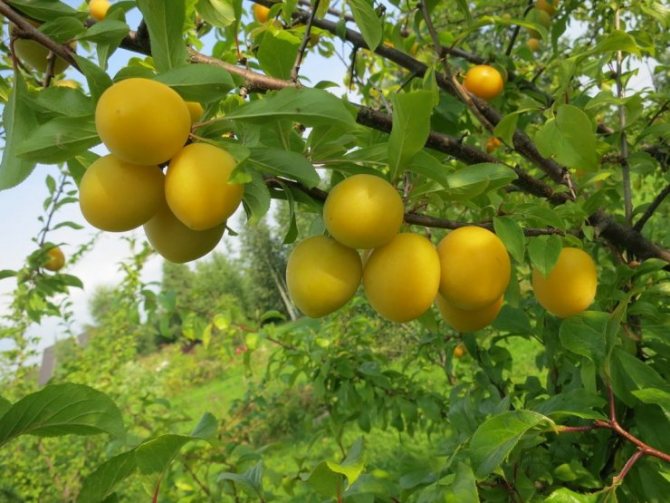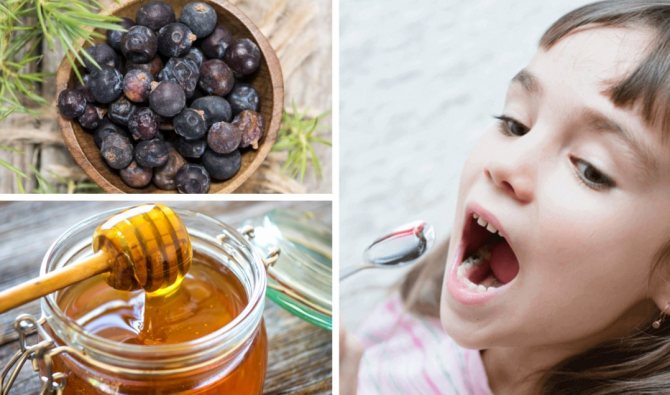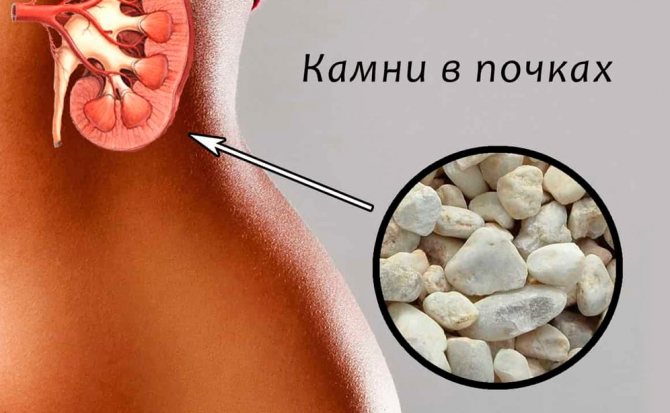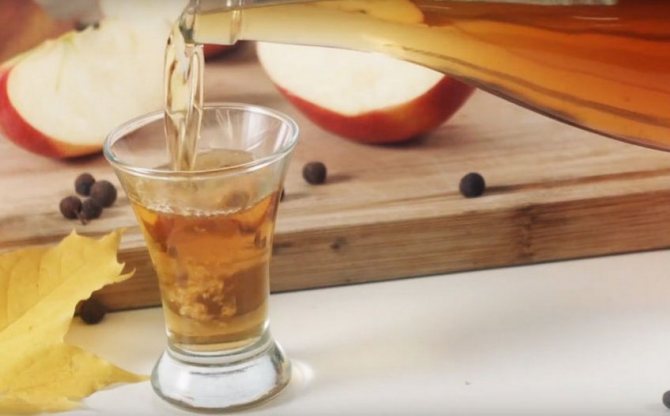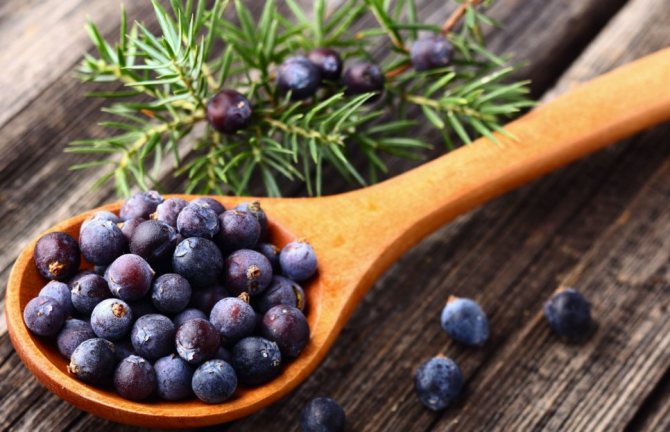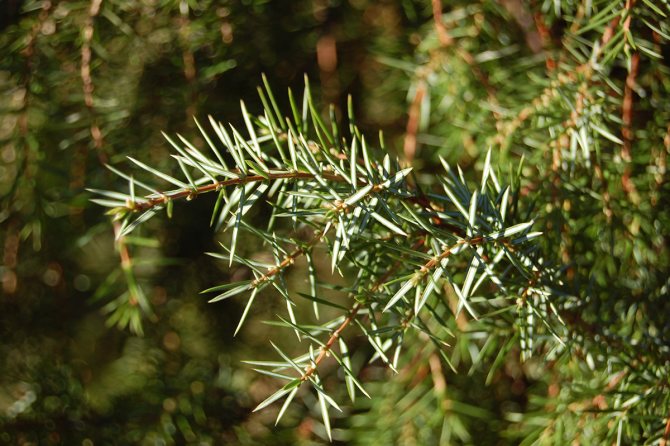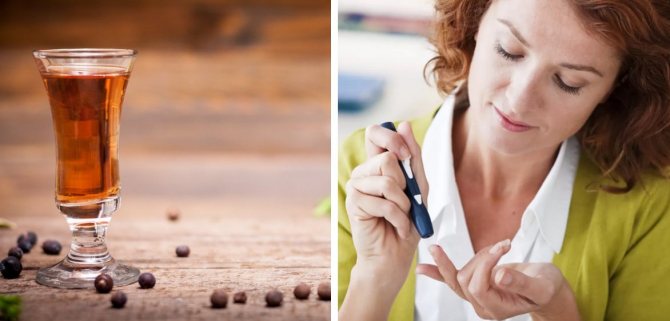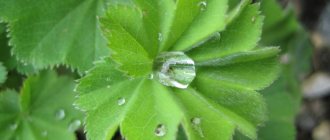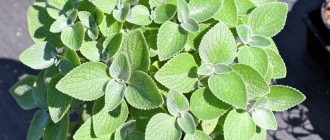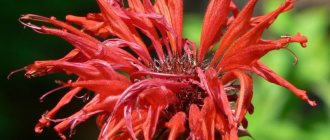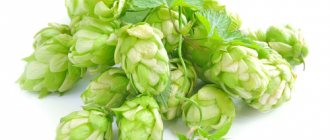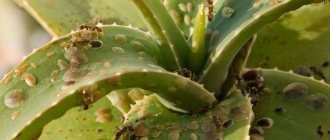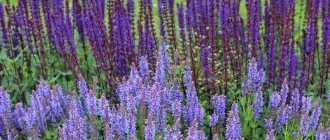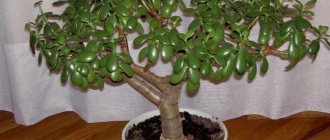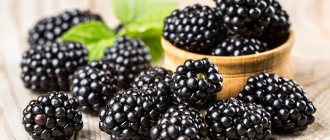Description and habitat
In its natural habitat, juniper grows in a temperate climate in the northern hemisphere of the planet. This culture can be found even in North Africa.
Common juniper prefers to grow on sandy and arid soils, hilly terrain, mountainous landscapes, forest edges, river and lake banks. Less commonly, this plant can be found near swamps, as well as in thickets of dense forests. On the territory of Russia, the shrub can be seen in the forest zone, less often it grows in the forest-steppe. The area in the eastern part of Russia extends up to the Lena River. Many varieties have a limited growing area, for example:
- Juniper Crimean.
- Juniper Tibetan.
- Juniper Chinese.
- Juniper Mexican.
- Bermuda juniper and many others.
This evergreen coniferous shrub can be represented as a bush that can grow up to 2 meters in height, but you can also find a neat columnar tree with a regular shape that can grow up to 5 meters.
The main feature of the shrub is the presence of prickly and hard needles, which reach 1 centimeter in length. As fruits on the bush, cones-berries are formed, which appear on a bush or tree in the second year of life. Initially, they are dark green in color, but over time they acquire a bluish-black hue. Cones are rather fleshy, round in shape, up to 1 centimeter in diameter. The plant begins to bloom in May, and the fruits ripen by the onset of autumn.
Content:
- 1 Healing properties of modjiper
- 2 Healing scent of juniper
- 3 Juniper in cooking
- 4 What Gardeners Should Know About Juniper
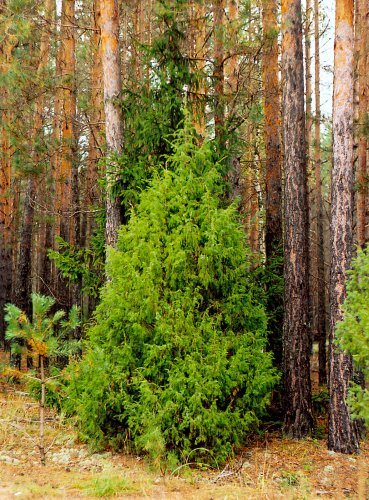
Common juniper, heather, arsa - Juniperus communis L.
The scientific name of the genus probably comes from the Celtic jeneprus - "prickly".
It grows on moderately moist soils, sometimes in damp places in coniferous forests throughout Eastern Siberia, with the exception of the steppe regions of the Irkutsk region and Buryatia, as well as the Argun and Aginsk steppes.
Evergreen, coniferous, dioecious, less often monoecious, rather tall shrub or tree up to three, sometimes more than meters tall, with a branched trunk. The bark is gray or grayish-brown, scaly. Leaves are linear or narrow, lanceolate flat-triangular, spaced, often arcuate, with a sharp prickly apex, located in whorls of three. Male cones are almost sessile, small, with 3-4 whorls of stamens. Female - numerous, at the ends of short lateral branches, located in the axils of the leaves on very short legs and consist of three scales, which, after fertilization of the ovules sitting on them, increase slightly, become fleshy and, growing together, form a cone-berry.In the first year of life, the cone-berry is ovoid, green, in the second - globular, black and blue, with a gray waxy bloom, shiny, equipped with a three-ray groove at the apex. The diameter of the pineapple is 7-9 mm. In a loose, greenish-brown pulp, there are 3, less often 2 seeds, convex on the outside and flat on the touching sides. Blooms in June.
For medical purposes, cones are harvested in the fall, when they are fully ripe and have acquired a dark blue, almost black color. Under the bushes, sheets are usually underlain and hit with sticks on the branches, while the fruits are easily crumbled. They are sorted, removing the admixture of fallen needles, twigs, spoiled pine berries, etc., dried slightly in the open air and dried in the shade, sheds or under sheds. Drying in ovens is not recommended, as in this case the raw materials are of poor quality. It is recommended to stir frequently to avoid self-warming.
Juniper cones contain up to 2% of essential oil, which contains a-pinene, camphene, borneol, cadinene, unenol, uniper-camphor, etc. In addition to oil, the fruits contain up to 40% sugars, about 9.5% resin, coloring substance uniperin, fatty oil, organic acids and other substances. Essential oil, vitamin C were found in needles and stems, and tannins and essential oils were found in bark and wood (Atlas ..., 1962). The content of vitamin C in terms of absolutely dry matter in needles is up to 658 mg%, and in stems - 325 mg% (Muravyova, Bankovsky, 1947).
In medicine, infusion of juniper fruits is used as an agent that disinfects the urinary tract, as well as an expectorant and improves digestion. The therapeutic effect is due to the essential oil, which, by irritating the mucous membranes, enhances peristalsis and improves the secretion of the glands, due to which the sputum liquefies and improves its separation. Excreted through the kidneys, the essential oil is moderately irritating to them, thereby increasing urination. In large doses, the essential oil causes severe irritation to the kidneys and reduces phlegm production.
In folk medicine, juniper berries are used as a weak diuretic, as well as for dropsy, malaria, rheumatism, nervous diseases, scrofula, as an antiscorbutic agent. Due to the presence of a large amount of sugar, juniper berries are used in distillation for the production of vodka, liqueurs, beer and drinks. In Scotland and France, the fruits have long been used for the production of gin-type juniper vodkas (Tikhomirov, 1900). Currently, gin has spread to many countries in Europe and America.
Dry distillation of juniper wood produces turpentine and cadinene oils, which are used externally as a pain reliever. Yellow paint is obtained from the bark, and green paint from the berries. Wood, which has a reddish color and great strength and resinousness, is used for various crafts and especially for carving.
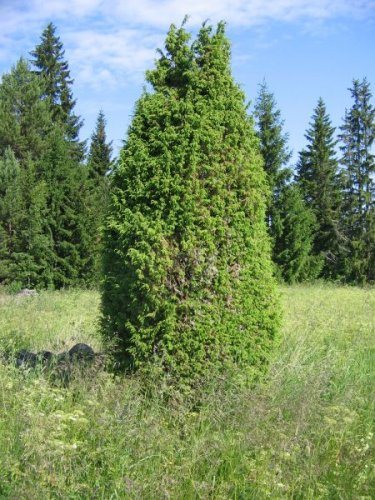

Tree juniper
Juniper belongs to the oldest cypress family. For many peoples, it symbolizes the overcoming of death, is a symbol of the eternity of life. What is so valuable about this beautiful plant?
Features of the workpiece
In order to make juniper blanks, only the ripe fruits of the plant are used. You can harvest buds in September. To do this, under a tree or shrub, you need to lay out a litter, and shake off the fruits from the plant. Fallen fruits must be well cleaned of debris, twigs and coniferous needles. The fruits must be dried, but this is done only naturally. To do this, the cones are laid out on the veranda, attic or under a canopy. If you dry the cones in an oven or electric dryer, they will lose all their healing properties.
The raw materials must be protected from high humidity, so the fruits must be packed in tight containers to prevent the evaporation of essential oils.The shelf life of juniper fruits is 3 years.
In addition to cones, blanks are also made in the form of bark, coniferous needles, wood, and even the roots of this plant. Wood and bark are mainly used to treat rheumatism and gout. These ingredients can also be used for blood purification purposes. Coniferous needles are used to treat respiratory infectious diseases, joint pain, as well as for the treatment of various types of skin rashes. The root in traditional folk medicine is used to treat bronchitis, pulmonary tuberculosis and various skin diseases.
Juniper root: application, medicinal properties and contraindications


Veres root and bark are also harvested and used in traditional medicine. They are cleaned, finely cut and dried in a well-ventilated area in attics and sheds at temperatures no higher than 30 degrees and minimum humidity. The root contains tannins, diterpene alcohols, anti-inflammatory and antibacterial components. The substances it contains help in the treatment of:
- bronchitis;
- skin diseases;
- sexual impotence;
- pulmonary tuberculosis.


Main varieties
In total, more than 75 varieties of this coniferous plant are known to science. Most of them can be planted for decorative purposes in their summer cottages, cultivated in parks and gardens. But in addition to the ordinary type of shrub, other types of this plant are also used in alternative medicine:
- Cossack. Under natural conditions, this type of shrub can be found in the Crimea and the Carpathians. It is worth noting that the Cossack juniper is a rather poisonous shrub. It can only be used externally. For this, the fruits and branches of the bush are used. On their basis, various decoctions and infusions are made for the treatment of skin diseases: skin cancer, lichens, scabies, boils. In addition, decoctions based on this plant are used for douching. They are recommended for Trichomonas genital inflammation in women. Powder of the Cossack plant species is used for dusting eczema, wounds, ulcers and warts on the skin.
- Crimean. This name combines 5 types of juniper that grow on the territory of Crimea: smelly, prickly, tall, common and Cossack. Basically, the berries of the prickly juniper are used for harvesting. Oil is extracted from this type of plant, which is used not only for the preparation of alternative medicine, but is also widely used in the field of cosmetology. The cones of the prickly juniper have a stimulating, diuretic and antihelminthic effect. The rest of the varieties of the Crimean juniper are of value due to the healing properties of their wood.
Description of the plant
Juniper (Latin juniperus) is an evergreen coniferous shrub or tree that belongs to the Cypress family. Under natural conditions, it forms light forests. They consist of juniper trees that can grow up to 15 m. Shrubs and smaller specimens of this genus grow in mixed and coniferous forests.
Did you know? For a day, 1 hectare of juniper plantings evaporates into the air up to 30 kg of phytoncides, which are capable of cleaning an area equal to a large metropolis from bacteria.
Juniper has a wide distribution area. It grows from the Arctic to the subtropical mountainous regions. The plant develops well in illuminated areas, with light, nutritious soil. Juniper is drought tolerant and can withstand temperatures as low as –25 ° C.
The culture can be propagated in the following ways:
- layering;
- cuttings;
- seeds;
- vaccination.
The tree-like juniper has a spreading crown, which can be multi-tiered. Its diameter reaches 2.5 m. The bark has a vertically scaly structure, its color is dark gray.
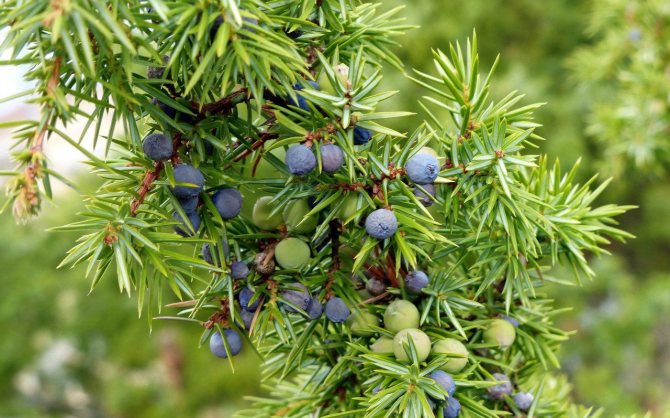

There are many varieties of crops.
Ornamental types of juniper are planted in gardens and parks for the purpose of landscaping and purifying the air from pathogenic bacteria, because the plant exudes a pleasant, coniferous aroma containing phytoncides. The fruits of the plant are used in medicine.
Decoctions and infusions are prepared from them, which are used as an auxiliary therapy for diseases of the respiratory system, nervous system, dermatitis, etc. The fruits are used in the culinary arts. They are added to dishes as a spice.
Also learn about the medicinal properties of juniper berries.
Healing properties
Before use, it is necessary to familiarize yourself with the medicinal properties and contraindications of juniper fruits. The shrub has many medicinal properties. The beneficial properties of this juniper are that the plant:
- It has a diuretic effect on the body.
- It disinfects well.
- Has a secretory property.
- Increases appetite.
- Pain relieves.
- Promotes rapid wound healing.
- It has an expectorant effect.
- Distracting.
- It is used for various kinds of inflammation.
- Purifies the blood.
- Has a bactericidal effect.
- Soothes.
The healing properties of the plant cones are due to the fact that they contain useful essential oil. This oil contains a large number of nutrients and elements that are necessary for the human body.
At the root of the plant are tannins, as well as diterpene alcohols. In addition, there are elements in the roots that are capable of killing pathogenic bacteria and relieving inflammation. Coniferous needles of the plant have a bactericidal effect, therefore, it is recommended not only to use it in the form of decoctions, but also to breathe coniferous essential oils in natural conditions on the street. Experts note that in one day a hectare of this plant is capable of evaporating 30 kg of phytoncides.
Medicinal properties and contraindications
Juniper phytoncides are several times higher than that of other conifers. The healing effect can be achieved simply by walking along the juniper planting. In medicine, the needles, roots, branches and fruits of the juniper are used. It is rich in such useful substances as:
- flavanoids,
- wax,
- pectin,
- ascorbic acid
- tannins,
- essential oils
- macro- and microelements,
- organic acids
- sugars.
Thanks to the extracts obtained from the plant, drugs have been invented that can relieve pain, relieve cough with viscous sputum, provide easy disinfection and antimicrobial effect. They have a diuretic, antitumor, anti-inflammatory, choleretic and wound healing effect.
The rich content of vitamin C helps to enhance immunity.
Like any medicinal plant in large doses, Veres (popular name for juniper) can cause poisoning. It is not worth prolonging the course of treatment for more than 2 months.
It is categorically impossible to use drugs for pregnant women. The substances it contains can cause the uterus to contract and lead to miscarriage.
Juniper is not prescribed for people with various types of nephritis (kidney disease). In these cases, the use of preparations containing juniper extracts can lead to the appearance of blood particles in the urine.
Indications for use
Before using juniper, you need to familiarize yourself with some of the indications. This plant can successfully cure diseases:
- Urinary system. Juniper is one of the most effective herbal diuretics. Various decoctions and infusions made on the basis of cones can be used to treat chronic inflammation of the kidneys, bladder, with stones and sand in the kidneys, severe edema.Decoctions are also used to treat dropsy and to disinfect the urinary tract.
- Gastrointestinal tract. The bush fruit is often used to treat indigestion. Bush berries can increase appetite, while normalizing peristalsis, relieving heartburn. Experts recommend drinking decoctions based on the fruits of the plant with nausea, vomiting, diarrhea. Also, this remedy is taken for diseases of the biliary tract and liver, diseases of the stomach. It should be noted that it is not necessary to make teas and decoctions based on juniper cones, they are allowed to simply be chewed raw.
- Nervous system. The shrub has a calming effect and relaxes the nervous system. Decoctions are recommended for constant insomnia, trips and nervous disorders. It will also be very useful to lie in a bathtub with the addition of the needles of this plant before going to bed.
- Respiratory system organs. The plant has the property of thinning phlegm, so it is recommended to use it for diseases of the bronchi and lungs. During an exacerbation of influenza and acute respiratory viral infections, the room can be fumigated with the smoke of juniper branches, as well as regularly organize aromatherapy sessions based on the essential oils of this plant.
- Musculoskeletal system. Folk remedies based on a coniferous bush are considered very effective for inflammation of the joints, bones and muscles. Can be taken orally, and compresses and lotions based on the plant are allowed.
- Skin. An external agent is used in the treatment of scabies, lichen, dermatitis, ulcers and many other skin diseases. The tool is able to heal wounds and have a bactericidal effect. In case of gum inflammation, it is recommended to simply rinse your mouth with juniper broths. With otitis media, tincture of ephedra cones is instilled into the ears.
Not only the beneficial properties, but also the contraindications of the fruit of the juniper must be studied before using it. This plant is strictly contraindicated in the presence of an acute inflammatory process in the kidneys and digestive organs. In no case should you use products based on this plant during pregnancy and lactation. Also, the tool is contraindicated for use in children. In some cases, there may be an individual intolerance to the fruits of this shrub. If the dosage is not followed, a person may experience an allergic reaction or indigestion.
What does juniper cure?
Traditional medicine is very actively using the beneficial properties and contraindications of juniper fruits. The coniferous tree serves as a cure for many diseases and can, if not completely eliminate them, then at least significantly alleviate the symptoms.
Juniper for prostatitis
The anti-inflammatory properties are good for prostate inflammation in men. This remedy is of particular benefit:
- 3 large spoons of juniper berries are mixed with a spoonful of fennel fruits;
- add 1 spoonful of dry licorice root, chamomile flowers and parsley root;
- mix the ingredients;
- pour 2 large spoons of medicinal collection with 500 ml of water;
- boil for 10 minutes.
You need to take a healing collection twice a day - only 3 sips. The medicinal properties will be most beneficial if you drink the remedy on a full stomach.
Juniper for colds
Juniper treatment is beneficial for ARVI, influenza, bronchitis and other colds. Dried berries in a volume of 2 large spoons need to be poured with boiling water, and then boiled for another 10 minutes.
When the broth is properly infused and cooled, it will be possible to drink 2 small spoons three times a day.
Juniper cough
When coughing, the greatest benefit is inhalations with juniper steam. About 15 dried fruits need to be poured with a liter of boiling water, and then left under a closed lid for 10 minutes.Then you need to bend over the container, covering your head with a towel, and inhale the aromatic vapor for several minutes. The healing vapors of the plant will penetrate the respiratory tract, bronchi and lungs and help to quickly eliminate the inflammatory process.
Important! When inhaling, it is necessary to take slow and shallow breaths, otherwise you can burn the mucous membranes and only worsen your own well-being.
Juniper for oncology
The medicinal properties of juniper are so great that they are even used for the treatment of cancer. In particular, with leukemia, it is recommended to take a healing collection, which contains juniper. To prepare it, you need to mix:
- juniper cones or wood;
- flax seeds and pine buds;
- linden flowers and nettle roots;
- oak acorns and common blackhead;
- mountain arnica and white mulberry leaves.
All of the listed ingredients are taken in equal amounts, mixed, then 2 large collection spoons are measured and boiled in 500 ml of water for about 10 minutes. The finished product should be drunk three times a day, 3 sips on an empty stomach and a couple of sips immediately after eating.
Juniper for joints
For articular diseases, the medicinal properties of juniper are used mainly externally. You can prepare a tincture with strong alcohol - 20 berries must be poured with 100 ml of alcohol and kept in a dark place for 10 days.
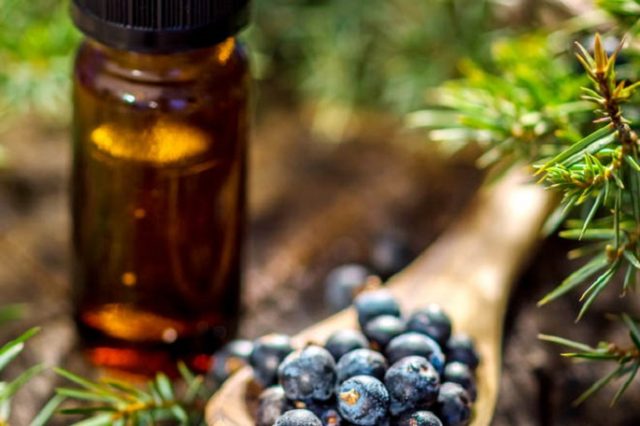

The finished tincture is filtered, squeezing the berries, and then the painful joints are thoroughly rubbed with a remedy or a warming compress is applied for a couple of hours.
Juniper in gynecology
Juniper as a medicine is beneficial for gynecological infections, colpitis and thrush. The medicinal properties of berries help to cope with bacteria and fungus, eliminate pain and burning sensation.
Douching with a medicinal decoction will bring the greatest benefit. Pour about 20 g of juniper berries with a liter of water, boil for no more than 5 minutes, then cool and filter. The genitals are irrigated with a slightly warm solution twice a day.
Juniper and pressure
Juniper broth inside lowers blood pressure. To prepare a remedy you need:
- mix 10 g of berries with oat grains and wheatgrass root, taken in a volume of 5 g;
- pour the collection with a liter of water and boil over low heat until a third of the liquid has boiled away;
- cool and filter the finished broth.
You need to drink the remedy three times a day, several sips. With a course intake for 2 weeks, the berries will be able to stabilize blood pressure.
Juniper for kidney stones
Infusion of juniper fruits has diuretic properties and is beneficial for calculi in the kidneys. Prepare a remedy as follows:
- a large spoonful of berries is poured with a glass of hot water;
- keep the product for 4 hours under the lid;
- filter the infusion.
You need to take the product three times a day, a single serving is only a third of a glass.
Juniper for blood purification
The beneficial properties of juniper berries help cleanse the blood, fill it with valuable substances and improve the composition qualitatively. Cleaning the circulatory system is very simple - every morning you need to chew fresh berries.
You need to start the course of treatment with only 5 berries per day and add 1 piece daily until the total daily dosage is 15 berries. After that, it is necessary to reduce 1 berry daily, until only 5 fruits remain for the day again.
Juniper for vessels
Vitamins, essential oils and organic acids in berries strengthen the vascular walls, lower bad cholesterol and help improve brain function. The healing properties of juniper baths are best used to cleanse and strengthen blood vessels.
A small spoonful of berries should be mixed with 2 large spoons of dried lavender, mint and oregano.The collection is wrapped in a clean linen bag and dipped in a filled hot bath, after which it lies in it for about 15 minutes.
Juniper for hemorrhoids
Juniper berries are used in folk medicine to treat hemorrhoids, both external and internal. The healing properties of the plant help to quickly eliminate hemorrhoids, and you can use juniper in two ways at once.
- Taking juniper oil. If you stir 1 drop of the plant's essential oil in a small spoonful of honey and use the medicine twice a day on an empty stomach, you can eliminate the problem of constipation, leading to hemorrhoids, and strengthen the walls of the vessels of the small pelvis.
- Medicinal enemas. Only 3 drops of essential oil need to be dissolved in 5 ml of chamomile broth and briefly introduced into the anus. You need to repeat the procedure for a week 1 time per day.
You can apply juniper oil internally and externally separately, or you can combine treatment methods, then they will bring an early effect.
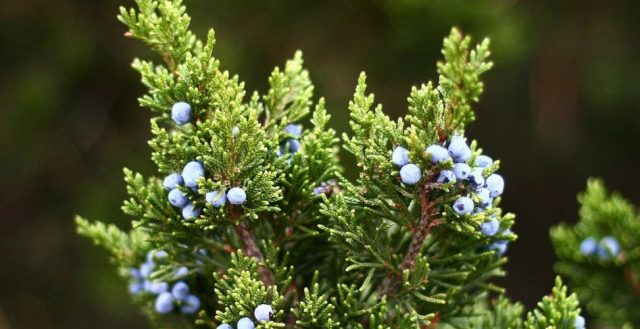

Juniper for diabetes
The medicinal properties of juniper berries and other ingredients help in the treatment of diabetes. To prepare the medicine you need:
- mix 10 g of juniper berries with dandelion roots and flax seeds, they need to be taken 20 g each;
- add 30 g of burdock root, the same amount of nettle leaves and 25 g of dried blueberries;
- pour 5 large spoons of collection with a liter of water and leave for a couple of hours.
Then the infusion will need to be boiled over a fire for another 10 minutes and filtered. You need to drink the product three times a day in the volume of a glass. Juniper combined with herbs will lower glucose levels and help improve liver and pancreas function.
Juniper Slimming
Healing remedies based on the plant help to get rid of excess weight, instructions for the use of juniper fruits allow even obesity to be treated with it.
To obtain a healthy dietary drink, you need to mix the berries of the plant with buckthorn, lovage roots and yarrow in equal volumes. 20 g are separated from the collection and the ingredients are poured with a liter of hot water, and then insisted for 2 hours.
You need to drink the remedy four times a day, 3 sips. Juniper improves the functioning of the digestive system and promotes faster disposal of toxins. In addition, the use of the plant normalizes the hormonal background, which is also responsible for body weight. All of the listed benefits of the plant make it a good tool for fast weight loss.
Benefits for women and men
Before starting treatment, it is necessary to study not only the medicinal properties, but also the contraindications of juniper berries. This is due to the fact that medicines based on this coniferous plant can do a person not only benefit, but also harm if he has any contraindications.
The beneficial properties of juniper often help women in the treatment of diseases in the field of gynecology. Various herbal infusions and decoctions are used for douching. These procedures are especially useful for vaginal inflammation. In addition, juniper is very effective in treating inflammation of the appendages. Experts recommend that women in the premenopausal period regularly drink an infusion based on a coniferous plant, as well as do aromatic sessions.
For women, juniper-based medicines are effective in treating nervous disorders that occur against a background of hormonal disorders. At home, you can prepare decoctions, tinctures and oils for this. In addition, it is also recommended to chew fresh juniper fruits.
As for the health of men, in case of sexual weakness, tinctures based on root, bark, bush wood and water or alcohol can be used. Thanks to this, blood circulation in the pelvic area is normalized and the sexual activity of a man is improved.
Composition and calorie content
The berries of a coniferous plant do not contain a lot of proteins or fats, so the calorie content is low - 116 kcal / 100 g.
Chemical composition of the product:
- pectins;
- organic acids - valeric, formic, salicylic, acetic, malic, succinic;
- flavonoids;
- tannins;
- carbohydrates;
- resin;
- essential oils;
- mineral salts - iron, aluminum, copper and manganese;
- vitamin C.


Folk recipes
To prepare the infusion, you need to take one tablespoon of the fruits of the plant, pour them with one glass of boiling water, boil over low heat for 5 minutes, let it brew for 40 minutes. After this time, the broth must be filtered, after which it is taken 3 times a day, two tablespoons before eating.
To prepare another version of the infusion, you need to take 2 teaspoons of dried juniper fruits, pour one glass of boiled water, let it brew for 2 hours. After 2 hours strain the tincture, take 1 tablespoon 3 times a day before eating.
To get a tincture for grinding, you need to prepare one part of the raw material, 10 parts of 70% alcohol. Pour the raw material with alcohol, let it brew in a warm room for one week. Strain the tincture before use.
Juniper-based folk remedies are used to treat many diseases. And so that the room smells of a pleasant coniferous aroma, you can periodically arrange juniper aromatherapy, which will be not only pleasant, but also useful for the body.
↑ Juniper in cooking
From the fruits of juniper, you can get an unusually tasty and aromatic syrup for making jelly, jelly, marmalade, as well as almost forgotten juniper liqueur.
Juniper fruits are harvested in September, when they are fully ripe, when they turn black and blue. Collect the berries or shake off the berries on the cloth spread out under the bushes. To prepare the syrup, the collected cones are crushed with a wooden pestle, doing this very carefully so as not to crush the seeds, which have a lot of bitterness.
To impart a specific taste and aroma, juniper is seasoned with meat, fish, and its ground fruits are added to the dough. Since ancient times, meat, ham, bacon have been smoked in the smoke of burnt juniper.
Once upon a time in Novgorod there were even heather traders (juniper was also called heres) who sold juniper cones. They were used to make fragrant kvass, fruit drink, and on holidays - an intoxicating drink - heather wort. Juniper beer is still brewed in Sweden and Finland.
Juniper tea.
Crushed cones berries (2 teaspoons with top) pour 0.5 liters of boiling water and leave for 10 minutes.
If you want to add the aroma and flavor of juniper to the meat soup, add shredded (like black pepper) dried pine berries to it (about 1 teaspoon for 4-5 servings). Or you can add whole cones (20 g per 1 liter) to the meat broth cooked and seasoned with potatoes, carrots, onions and parsley, and then cook it for a few more minutes.
And how delicious sauerkraut with juniper is! When salting, add a cone-berry broth to it (500 ml of broth per 10 kg of cabbage). It is made from crushed dry cone berries (about 20 g per 1 liter of water).
It is good to add broth of pine berries (10 pieces per 1 liter of water) to kvass 3-5 hours before it is ready.
Of all the types of juniper, only one - Cossack - is not suitable for food due to the toxicity of the fruit! To avoid misfortune, remember that the Cossack juniper is an ornamental undersized shrub with creeping branches and reddish bark. Its fruits are distinguished by a bumpy surface, brownish-black color and a characteristic pungent unpleasant odor. The needles are scaly, not prickly.
Use in cosmetology
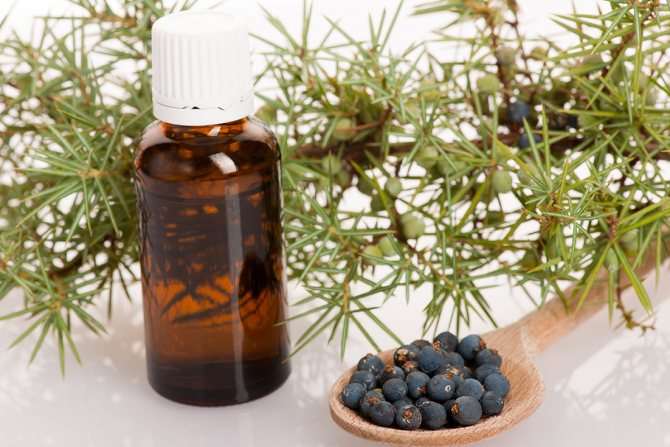

Concentrated berry oil can help fight cellulite.
In cosmetology, 3 important properties of juniper fruits are used:
- bactericidal property.It normalizes the sebum regulation process, which in turn helps to cleanse the skin;
- antiseptic property. The skin gets the impetus for renewal. Many teenage skin problems are addressed. Reduces greasiness and inflammation of the skin;
- tonic property. The enlarged pores are narrowed, the pores are cleaned of blackheads.
With a lower concentration, juniper extract is used in the creams of the series for more mature skin (to increase the elasticity of the facial skin).
Hair masks with juniper fruit extract accelerate hair growth. The bulbs of each hair are strengthened. Skin diseases of the head are removed: seborrhea, weeping eczema. Juniper revitalizes hair, adds strength to it.
In perfumery, the extract from the fruit is used as a flavoring agent and aroma fixer.
The concentrated oil can help fight cellulite.
When and how juniper is harvested
You need to look for juniper on sandy soils, dry pine forests, in the foothills. The plant is quite light-requiring, not afraid of frost and drought resistant.
It is better to pick juniper berries in the fall, from early September to early November inclusive. Mainly they use cones and needles of the plant. The rest is rarely used and is sometimes not worth collecting. To pick berries, a cloth or paper is spread on the ground, over which the plant will shake.
Harvesting and storage of raw juniper
Harvested juniper berries must be cleaned of needles, debris and unripe fruits. You can dry the berries in the sheds or attic. Do not dry by raising the air temperature. In this case, the structure of the plant is destroyed, and it loses its beneficial properties.
Dried berries should not be shriveled and should be blackish in color. The common juniper should not be confused with the Cossack variety of berries. They differ slightly in color, but some berries are healthy, while others are poisonous.
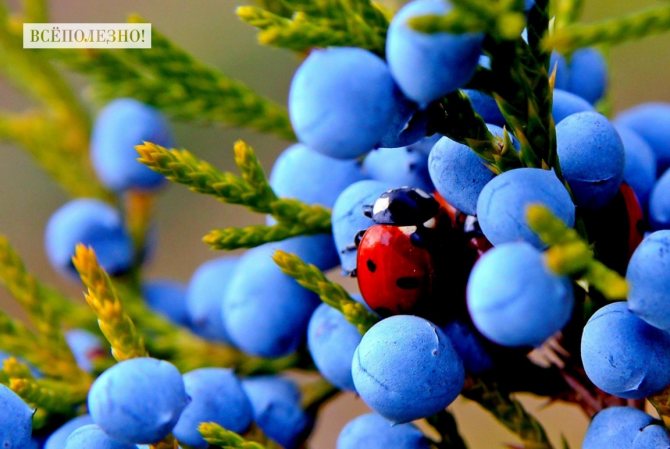

Store dried berries in a closed jar or box, away from sunlight.
Juniper is a very useful plant, which is still actively used in various industries. It has diuretic, anti-inflammatory, choleretic effects. It has many cosmetic benefits.
It is widely used in folk medicine. It is used as a spice for food. But it also has negative properties. Therefore, before using, you need to make sure whether you can use this plant or not. The berries of an ordinary juniper should not be confused with poisonous "brothers".


